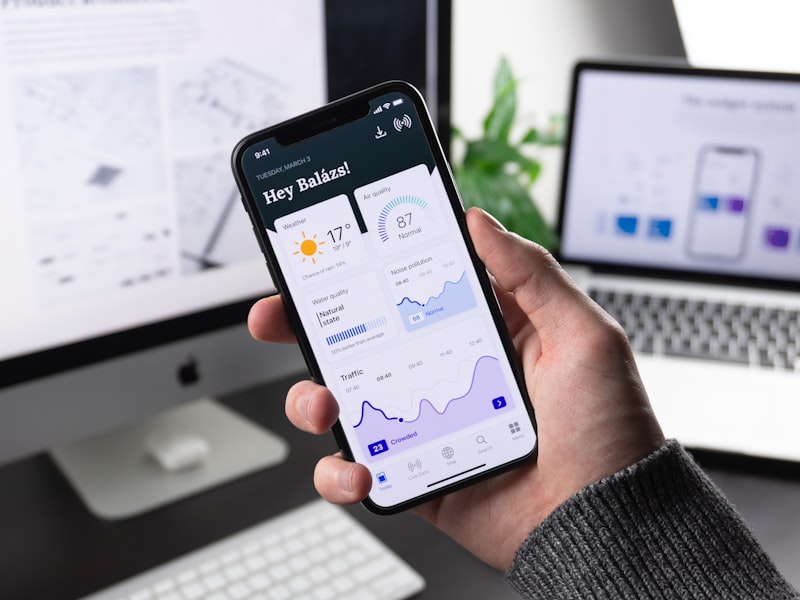If you're like me, you've probably heard the phrase "content is king" a few hundred times. And if you're like me, you might be feeling a little tired of hearing it. But here's the thing: content really is king—and there are lots of ways to use it to drive sales.
Content has become such an important part of the way we work, whether you're a freelancer or someone who runs a company. It's not just about producing content anymore—it's about creating content that sells.
Create different types of content
You're probably thinking "well, duh. Of course, I have to create content." But the truth is that many businesses don't think about their content strategy in terms of a funnel. They often just create the same types of content consistently and don't change their tactics based on what stage in their sales process they're at or who they're talking to (if you haven't read it yet, check out this post).
You should be creating different types of content depending on where your prospect is in their buyer journey—from educating new customers through lead generation to nurturing leads into sales and beyond—and what kind of information they need at each stage. For example:
- Blog posts - These can be long-form articles or shorter Q&As with experts; both are good for educational purposes and generating leads
- Videos - Short videos can be used as part of an educational campaign or as a tool for sharing valuable industry insight with prospects
Address every stage of the buyer's journey
It's important to create content for each stage of the buyer's journey.
A customer journey map visually represents how customers interact with your brand across all touchpoints, from awareness through purchase to ongoing engagement. It shows the steps in their buying process and where you can interact with them along the way. Use Miro or Mural or whatever and create a customer journey map for your business.
The following examples illustrate some common strategies for writing content that supports each stage:
- Awareness: This type of content might be used by companies generating leads from social media or SEO (search engine optimization). It could include infographics, videos, blog posts, etc.
- Evaluation: For this phase, you should focus on what potential customers are searching for online (using keywords) in order to guide them toward relevant products or services. You may also want to create landing pages specifically designed for lead generation so that you can capture information about their needs and preferences as they move forward in the buying cycle.
- Purchase: This type of material is more sales-focused than other types mentioned here because it typically includes direct links back into your website where you can make an offer directly related to whatever it was that caught reader’s attention initially (i.e., if someone read something about email marketing apps then there would be links back into the site showing relevant solutions you offer). Do some link-building outreach and get links from high-quality and trustworthy domains.
Use quality content
The quality of your content is important and will make all the difference in how well it performs. There are a few reasons why:
- Quality content is more likely to be shared. If someone finds your post interesting or helpful, they’re more likely to share it on their own networks. It also makes them feel good about sharing your work!
- Quality attracts links (backlinks). This helps increase your search engine ranking or SERP rank. Having higher SERP ranks for keywords related to your business will see more traffic coming from Google search results.
- People reading high-quality articles tend to remember them longer – meaning that if a person reads one of our posts about SaaS marketing (and I know there are some out there!), then hopefully, that person isn’t going to forget all about it after an hour or so like most other forms of entertainment-oriented media consumption tend towards these days!
Content that educates is more successful
The content that consumers are most likely to share, trust, and use is educational in nature. Content that educates helps your audience understand the need for your product or service. Educational content builds trust with potential customers by demonstrating expertise on a subject matter relevant to them. Consumers will view you as more trustworthy if they see a consistent message across your entire site. Using company-owned terms and phrases in blog posts, emails or website copy instead of multiple inconsistent descriptions of products or services across these mediums can help build this credibility factor even further.
Content that educates also tends to be remembered long after readers have read it because it provides relevant and useful information. This type of content encourages people to search for keywords related to what they just read because they want more information about those topics (think keyword research).
Know your target audience
You might be thinking, “I already know what my target audience is!” But do you really? If you’re not sure, or if you want to get more detailed information about your audience, then here are some tools that can help:
- Social listening tools allow you to search and monitor social media platforms in real-time. You can see the topics and hashtags that people use most often on Twitter and Instagram and any keywords they use when talking about your brand or products. This will give you an idea of who is talking about your company. When writing content or creating ads (and even developing new product lines), there will be less guesswork involved in understanding how best to speak to them.
- Online surveys are another great way to gather data about your target audience through online surveys. These surveys can be conducted via email campaigns where customers are asked questions such as: What was the last book/movie/TV show that got them hooked? Why did they buy this particular product instead of another one? How do they feel about your brand compared with others? When creating these types of surveys, it's essential not only which questions but also how many questions should go into each campaign."
Know your brand voice and style guide
Having a document that defines the tone and style of content you create is essential to creating a consistent brand voice. A brand voice helps ensure that all your content sounds like it came from the same company, and it allows customers who are loyal to your brand identity with the information you share.
Your style guide can help you write copy that aligns with the way people talk about and think about your products or services, allowing them to connect with what they’re reading or hearing. The best part? It’s super easy—all you have to do is brainstorm ideas for how people might describe what you do, then choose which ones sound most natural and exciting!
Be consistent with posting
- Post regularly. Don’t post more than once a day or less than once a week.
- Be consistent with posting times so that your followers know when to expect new content from you. If you post multiple times per day, try to space out those posts evenly throughout the day so that people can check in with you during their busy days (or nights).
- Be consistent with posting types: if one kind of content is working for you and another isn't, keep putting out more of what works! You can always change it up later on when it feels like there's been enough of a run on one type of content in particular.
- Plan out your calendar in advance so that every month has an editorial plan laid out ahead of time—this will help ensure that no matter what happens within your company or industry over the course of each month (or quarter), there will always be something being planned and published by someone within the organization. Use a social calendar platform such as CoSchedule, Buffer, or DataDab social.
Promote your content on social media and other digital channels
You can use social media and other digital channels to increase traffic to your site.
Be sure to promote your blog on social media by sharing your posts with relevant communities and utilizing hashtags. You will get more eyes on your content, hopefully leading to increased interest in purchasing from you while also driving more traffic back to the site. You can even create a dedicated hashtag for each piece of content so people can join in conversations around it!
The secret to using content to drive sales is to use content that is as good as the product you're selling.
It's not hard: just make sure what you're putting out there is easy to understand, engaging, and appealing. If you can do that, then you'll have a much better chance of closing those sales.
And if you don't know how to do that? That's where DataDab comes in! We specialize in creating content that speaks directly to your audience, whether it be through blog posts, infographics, or social media campaigns.






